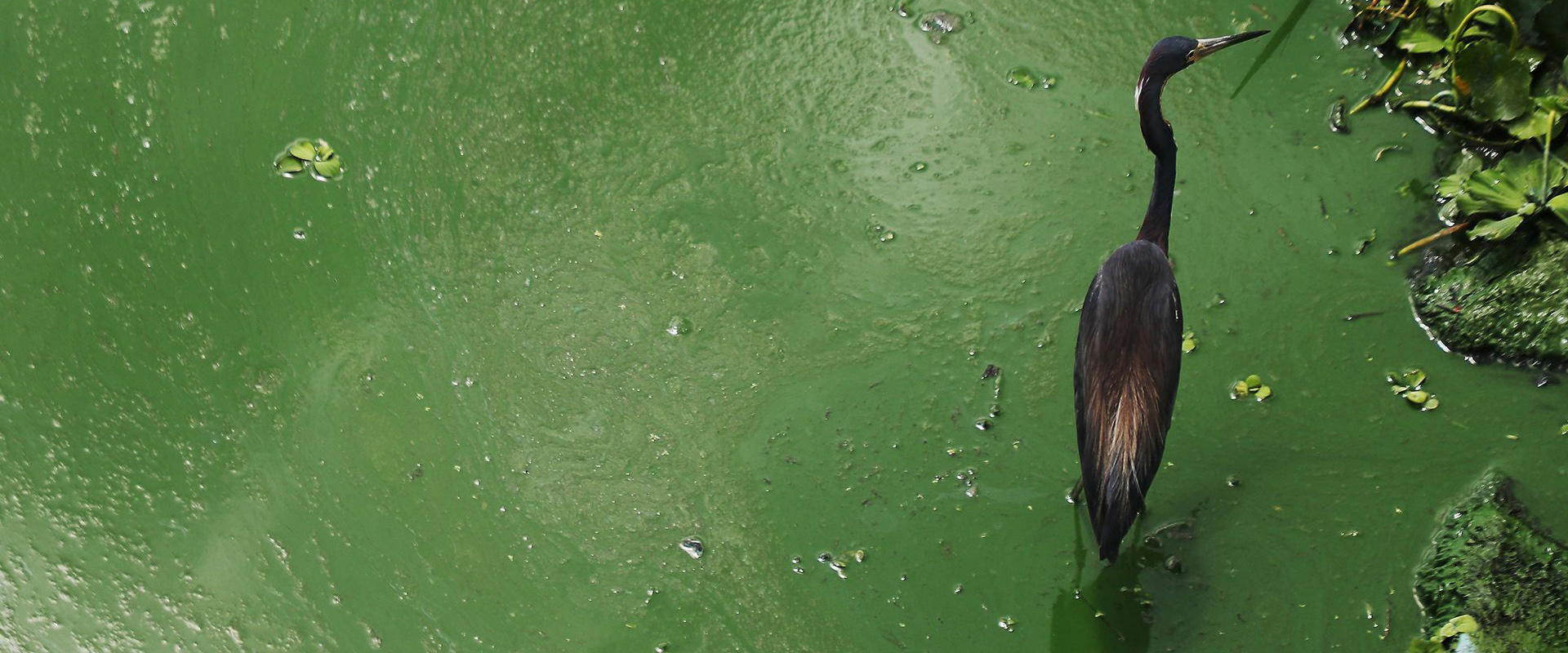Harmful algae blooms have captured national attention and elicit quick “solutions” to prevent the blue-green algae slime fouling our coasts. Some continue to place the blame of algae blooms on the shoulders of the U.S. Army Corps of Engineers by falsely claiming that holding more water in Lake Okeechobee could prevent or end our algae crisis. To push for higher lake levels, some people even point to the important repairs being made to the aging Herbert Hoover Dike, which surrounds Lake Okeechobee and protects communities to the south. But rather than being a solution, holding more water in the lake would create new problems- threatening human life, risking the integrity of the dike, and worsening water quality.
With recent news that critical repairs to the dike are being expedited, Audubon celebrated this public safety project. It is not part of Everglades restoration and won’t help the environment. But it’s important to help prevent a dike failure and for the safety of the residents living just south of Lake Okeechobee. Advocating to hold more water in Lake Okeechobee once repairs are done under the guise of sparing the estuaries and helping the environment is a false and dangerous solution. It’s bad for people, birds, and the environment.
A deeper Lake Okeechobee is more dangerous, dirtier, and unhealthy
A deeper lake is a dangerous lake, even after dike repairs are done
The main goal behind the repairs to the aging dike is to make it safer, not to increase water storage in Lake Okeechobee. The Herbert Hoover Dike falls in the worst safety rating category from the U.S. Army Corps of Engineering and is classified as “almost certain to fail under normal operations within a timeframe from immediately to within a few years without intervention.” Even after repairs are complete, it is unlikely that this safety rating will receive a “normal” rating. The dike is not going to be any taller, or anew, therefore advocating to hold more water in Lake Okeechobee post-repairs is putting communities back in harm’s way.
A deeper lake is a dirtier and unhealthier lake.
Lake Okeechobee marshes can cover up to 150,000 acres, one-third of the lake. These marshes provide critical habitat for birds like the endangered Everglade Snail Kite and host commercially and recreationally important fish species like bass and crappie. They also improve water quality by naturally cleaning water in the lake. When the lake rises too high (above 16 feet), the submerged aquatic vegetation in and around these marshes that would otherwise naturally clean the water, dies and decomposes- resulting in increased turbidity that makes lake water dirtier. In 2017 Lake Okeechobee rose to 17 feet because of Hurricane Irma, and its impacts are still being felt today (including current algae blooms). A deeper lake also experiences more waves, which stir up phosphorus-rich sediments that contribute to algae blooms. If Lake Okeechobee’s water levels were held even higher, future releases to the coastal estuaries would be done with even dirtier water!
Holding more water in Lake Okeechobee is reckless
We can’t advocate holding more water in the lake and expect to see a different outcome than what Florida is seeing today. A deeper lake is a disaster-in-the-making for the coastal estuaries to the east and west of Lake Okeechobee and for the communities that live south of the lake. It does not solve the current algae crisis, and it is a threat to wildlife, our health, our safety, and our tourism-based economy.
Want more? Check out these two publications by Audubon scientists.
Want to receive Audubon updates straight to your inbox? Click here to sign up for email updates on this and other top conservation issues in Florida.






